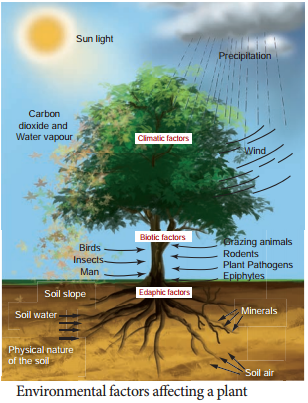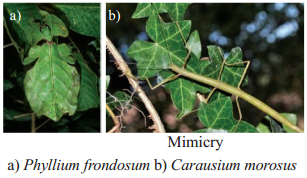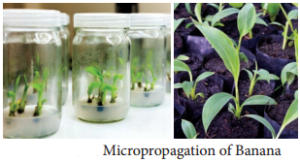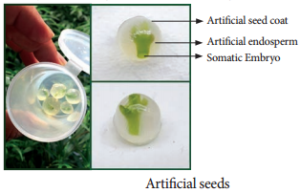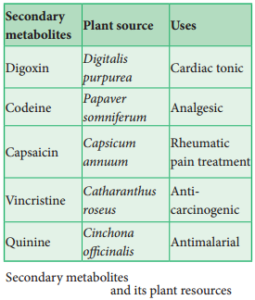Learninsta presents the core concepts of Biology with high-quality research papers and topical review articles.
Structure Of Ecosystem
Ecosystem comprises of two major components. They are:
(i) Abiotic (non-living) components:
It includes climatic factors (air, water, sunlight, rainfall, temperature and humidity), edaphic factors (soil air, soil water and pH of soil), topography (latitude, altitude), organic components (carbohydrates, proteins, lipids and humic substances) and inorganic substances (C, H, O, N and P). Abiotic components play vital role in any ecosystem and hence the total inorganic substances present in any ecosystem at a given time is called standing quality (or) standing state.
(ii) Biotic (living) components:
It includes all living organisms like plants, animals, fungi and bacteria. They form the trophic structures of any ecosystem. On the basis of nutritional relationships, trophic levels of an ecosystem have two components.
- autotrophic components and
- heterotrophic components.
1. Autotrophic components:
Autotrophs are organisms which can manufacture the organic compounds from simple inorganic components through a process called photosynthesis. In most of the ecosystems, green plants are the autotrophs and are also called producers.
2. Heterotrophic components:
These organisms which consume the producers are called consumers and can be recognized into macro and micro consumers. Macroconsumers refer to herbivores, carnivores and omnivores (primary, secondary and tertiary consumers).
Microconsumers are called decomposers. Decomposers are organisms that decompose the dead plants and animals to release organic and inorganic nutrients into the environment which are again reused by plants. Example: Bacteria, Actinomycetes and Fungi.
The amount of living materials present in a population at any given time is known as standing crop, which may be expressed in terms of number or biomass per unit area. Biomass can be measured as fresh weight or dry weight or carbon weight of organisms. Biotic components are essential to construct the food chain, food web and ecological pyramids.














